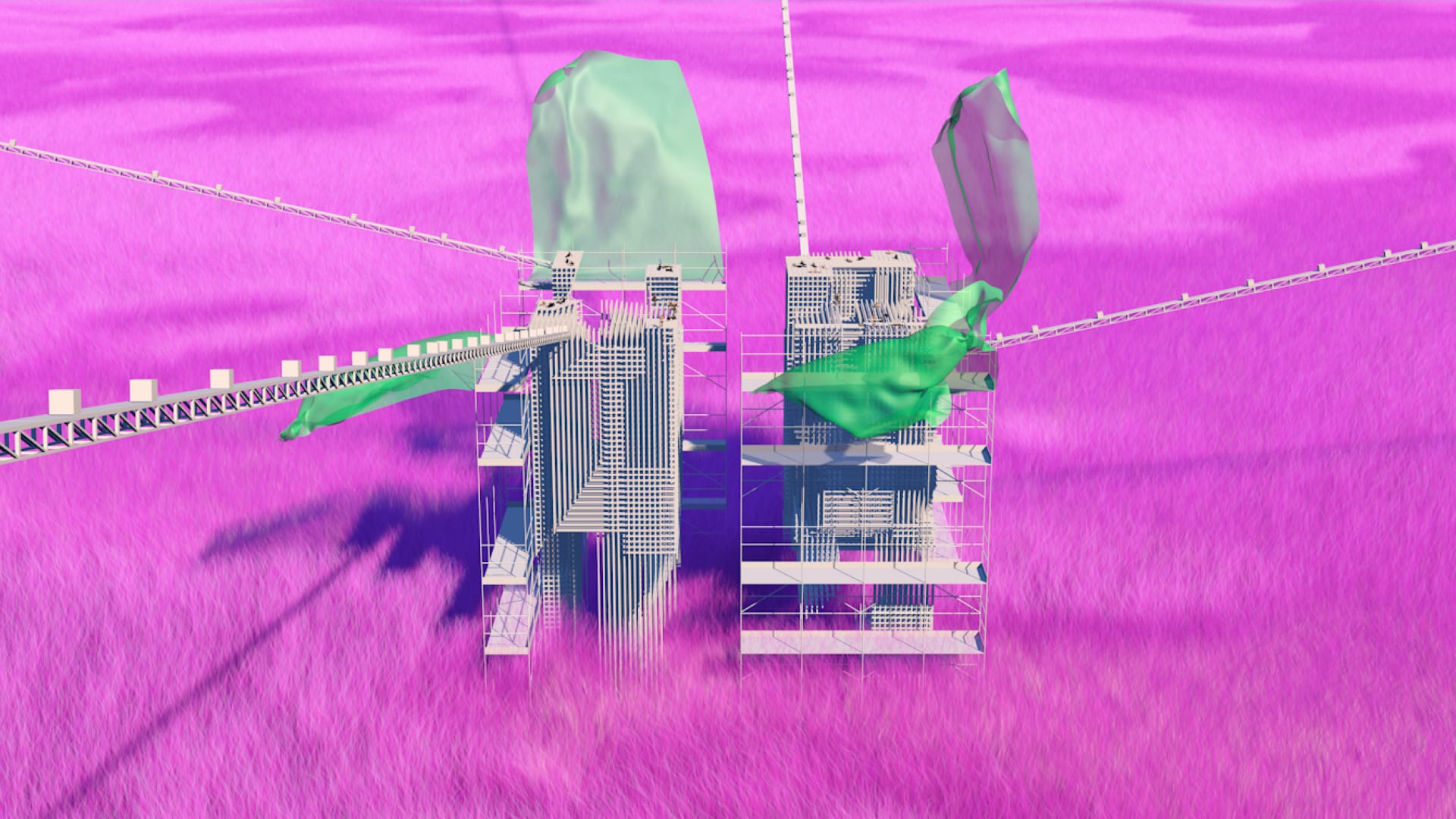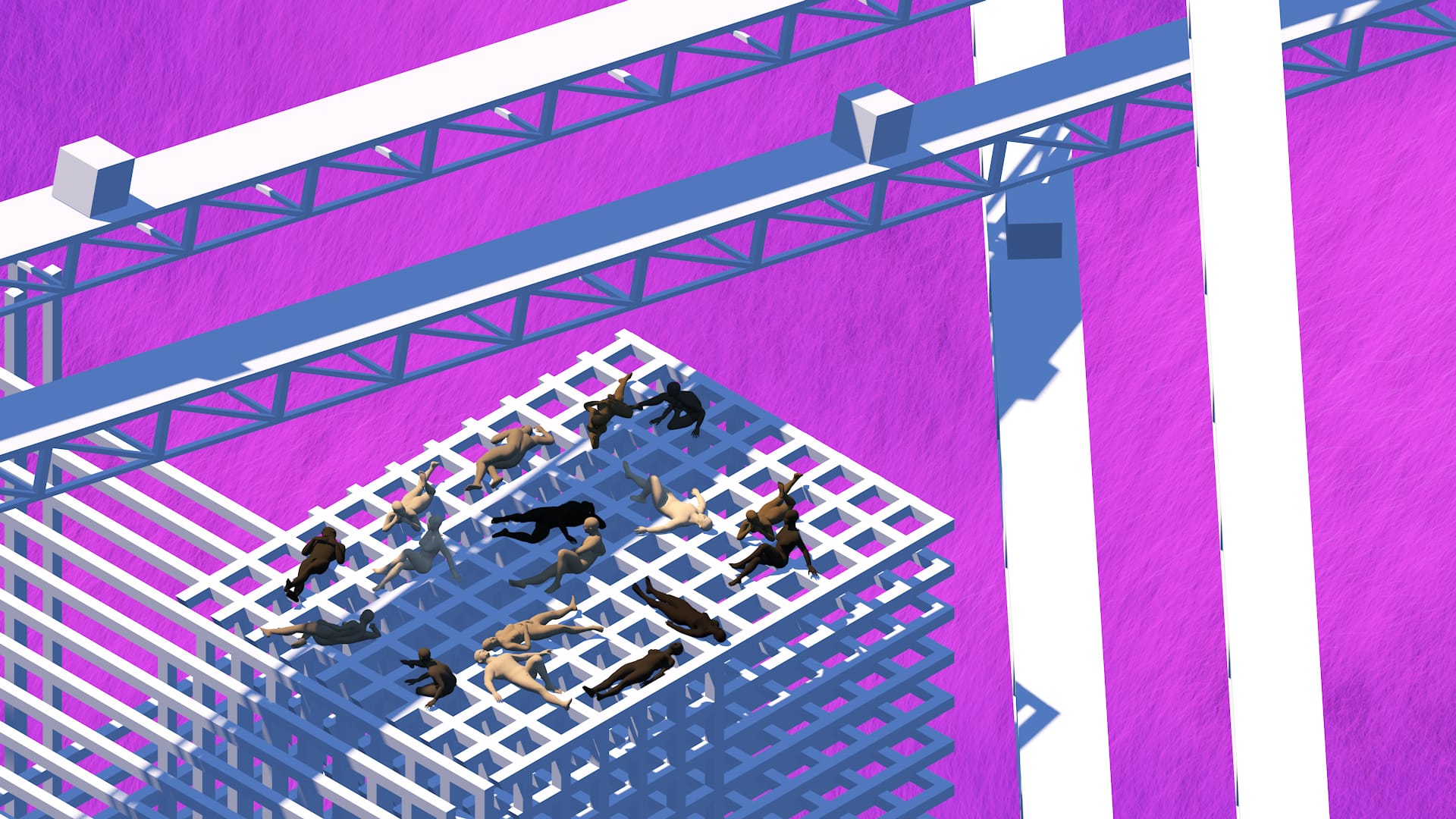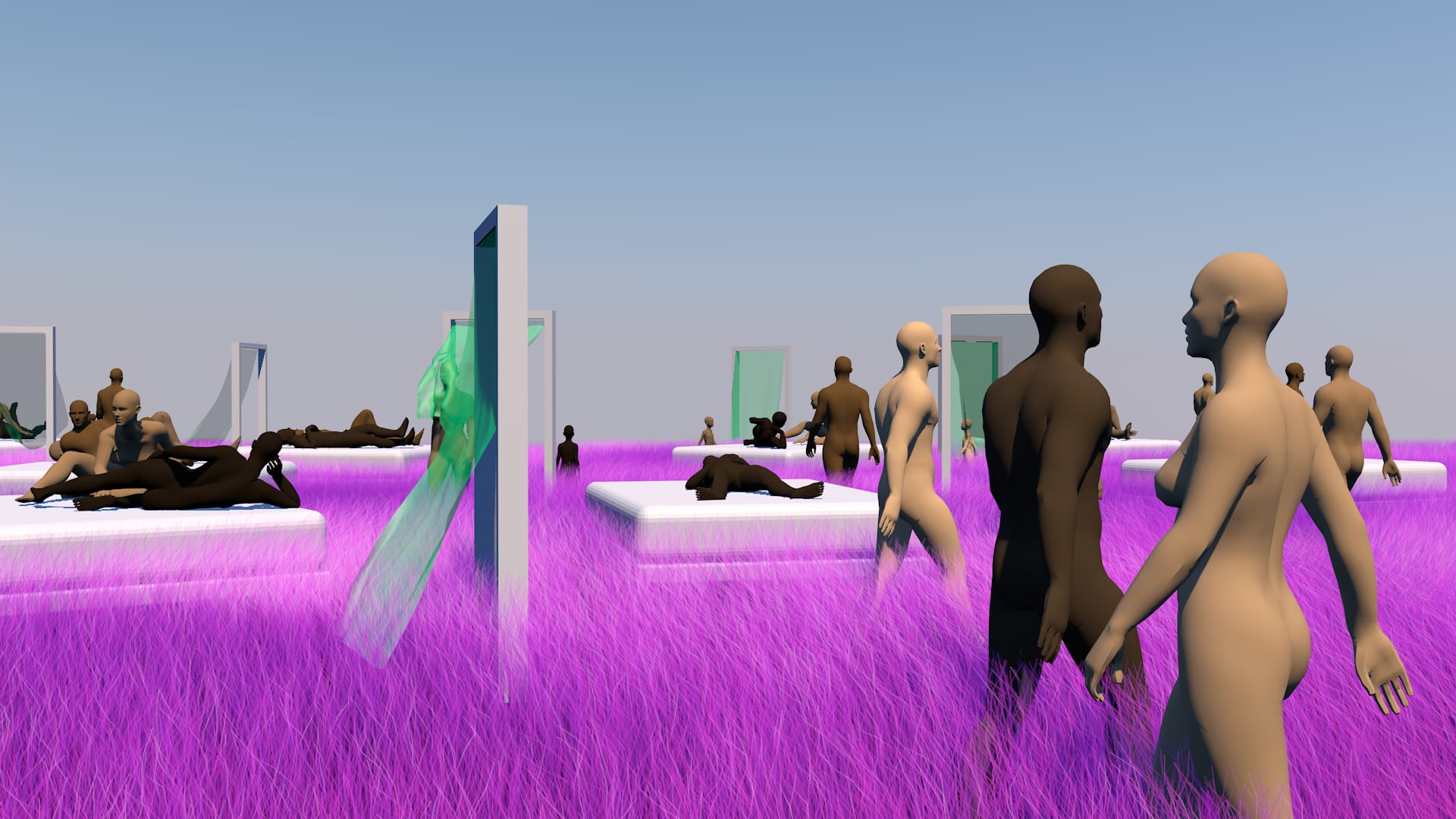A Post-Work Renter's Paradise
A Post-Work Renter's Paradise
A Post-Work Renter's Paradise
A Post-Work Renter's Paradise
A Post-Work Renter's Paradise
In A Post-Work Renter’s Paradise, productivity is for robots; children belong to themselves; to work is to reproduce; and everyone is a surrogate. In this post-capitalist world, productive labor has been automated, and the work left for humans to perform is solely reproductive. The social sphere is a stage for leisure and reproduction – the robots handle the rest. Human labor is no longer about productivity, but about maintaining the social and physical infrastructures that have stalled with the dissolution of capitalism. Architecture is in a state of limbo, and in constant need of repair and maintenance. Inspired by non-biological forms of kinship, the family as we know it is extinct, and everyone is a substitute for each other. This fictional world is represented in the form of an audio-visual essay which situates the narrative in the discourse of the current technological revolution, and provides glimpses into a post-work society which places the focus of its existence on social and biological reproduction.
In A Post-Work Renter’s Paradise, productivity is for robots; children belong to themselves; to work is to reproduce; and everyone is a surrogate. In this post-capitalist world, productive labor has been automated, and the work left for humans to perform is solely reproductive. The social sphere is a stage for leisure and reproduction – the robots handle the rest. Human labor is no longer about productivity, but about maintaining the social and physical infrastructures that have stalled with the dissolution of capitalism. Architecture is in a state of limbo, and in constant need of repair and maintenance. Inspired by non-biological forms of kinship, the family as we know it is extinct, and everyone is a substitute for each other. This fictional world is represented in the form of an audio-visual essay which situates the narrative in the discourse of the current technological revolution, and provides glimpses into a post-work society which places the focus of its existence on social and biological reproduction.
In A Post-Work Renter’s Paradise, productivity is for robots; children belong to themselves; to work is to reproduce; and everyone is a surrogate. In this post-capitalist world, productive labor has been automated, and the work left for humans to perform is solely reproductive. The social sphere is a stage for leisure and reproduction – the robots handle the rest. Human labor is no longer about productivity, but about maintaining the social and physical infrastructures that have stalled with the dissolution of capitalism. Architecture is in a state of limbo, and in constant need of repair and maintenance. Inspired by non-biological forms of kinship, the family as we know it is extinct, and everyone is a substitute for each other. This fictional world is represented in the form of an audio-visual essay which situates the narrative in the discourse of the current technological revolution, and provides glimpses into a post-work society which places the focus of its existence on social and biological reproduction.
At its core, this thesis is a critique of the asymmetrical relationship between ‘productive’ labor which sustains economies, and ‘reproductive’ labor which sustains individuals. The audio-visual essay provides glimpses into a post-work society, where productive labor has been automated and the only work left for humans is reproductive. It is a creative response to research on the devaluation of reproductive labor, and capitalist ideologies which have been sources of oppression for marginalized people. This vision of a post-work future is neither utopian nor dystopian. Rather, it is a series of provocations that asks the audience to consider the future of reproductive labor in an increasingly automated society, and view this undervalued form of work as work that makes the conditions of human existence possible.
At its core, this thesis is a critique of the asymmetrical relationship between ‘productive’ labor which sustains economies, and ‘reproductive’ labor which sustains individuals. The audio-visual essay provides glimpses into a post-work society, where productive labor has been automated and the only work left for humans is reproductive. It is a creative response to research on the devaluation of reproductive labor, and capitalist ideologies which have been sources of oppression for marginalized people. This vision of a post-work future is neither utopian nor dystopian. Rather, it is a series of provocations that asks the audience to consider the future of reproductive labor in an increasingly automated society, and view this undervalued form of work as work that makes the conditions of human existence possible.
For a more detailed explanation of the research and ideas that went behind this project, please visit the Hindsight Reader.
At its core, this thesis is a critique of the asymmetrical relationship between ‘productive’ labor which sustains economies, and ‘reproductive’ labor which sustains individuals. The audio-visual essay provides glimpses into a post-work society, where productive labor has been automated and the only work left for humans is reproductive. It is a creative response to research on the devaluation of reproductive labor, and capitalist ideologies which have been sources of oppression for marginalized people. This vision of a post-work future is neither utopian nor dystopian. Rather, it is a series of provocations that asks the audience to consider the future of reproductive labor in an increasingly automated society, and view this undervalued form of work as work that makes the conditions of human existence possible.










